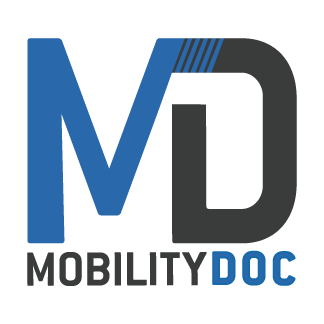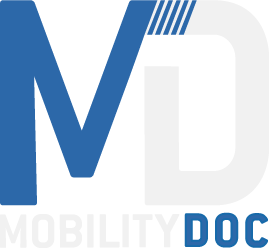Are you feeling a nagging discomfort or sharp twinge in your elbow that just won’t quit? You’re not alone. Elbow pain, a common issue for many, can stem from various causes and affect people of all ages and activity levels. In this blog, we’ll dive into two types of elbow pain, their causes, and elbow pain exercises to get you back to your best self.
2 Common Types of Elbow Pain
- Tennis Elbow (Lateral Epicondylitis) – A notorious troublemaker among athletes and desk jockeys alike, tennis elbow causes pain and tenderness on the outer side of the elbow. Overuse of forearm muscles, repetitive gripping motions, and improper technique are often to blame.
- Golfer’s Elbow (Medial Epicondylitis) – Contrary to its name, golfer’s elbow isn’t exclusive to golfers. This condition manifests as pain and inflammation on the inner side of the elbow, usually due to repetitive wrist flexion or forceful gripping activities.
Causes of Elbow Pain

Overuse and Repetitive Motion – Engaging in activities that involve repetitive motions or excessive strain on the elbow joint can lead to inflammation and pain. This includes sports like tennis, golf, and weightlifting, as well as occupations that require repetitive hand and wrist movements.
Trauma and Injury – Accidents, falls, and direct blows to the elbow can cause sprains, strains, or fractures, leading to acute or chronic pain. It’s essential to seek medical attention promptly if you experience severe pain, swelling, or difficulty moving your elbow after an injury.
Arthritis – Osteoarthritis and rheumatoid arthritis can affect the elbow joint, causing pain, stiffness, and reduced range of motion. Arthritic changes in the joint can result from aging, wear and tear, or autoimmune disorders.
Side Effects and Impact
Elbow pain isn’t just a physical nuisance; it can also wreak havoc on your daily activities and athletic pursuits. Simple tasks like lifting groceries or typing on a keyboard can become excruciatingly painful, disrupting your productivity and quality of life. Dealing with this discomfort often leads to compensations and increases risk of injury. These compensatory movements lead to muscle weakness or overuse depending on your movement. Waiting to address the pain usually makes matters worse!
For many athletes such as tennis players, golfers, weightlifters, and Jiu- Jitsu practitioners, elbow pain can be a game-changer. In Brazilian Jiu-Jitsu for example, grip strength is the foundation upon which you build much of your offense and defense. However, when elbow pain creeps in, your grip strength becomes compromised, undermining your performance and leaving you vulnerable to submissions.

Picture this: you’re attempting a choke, relying on a strong grip to secure your opponent’s gi. But instead of feeling solid and steady, your grip falters, weakened by the pain radiating from your elbow. Your opponent senses the opportunity and seizes it, escaping your hold and turning the tables in their favor. Similar issues appear in all of the sports mentioned above. That’s why it’s so important to take care of the problem before it becomes a bigger issue.
Elbow Pain Exercises
To improve your elbow pain it’s important to look at the joint from a holistic standpoint. We want to not just reduce pain but impact the muscles and connective tissues surrounding it to leave lasting results. We are going to share exactly how to do just that with the following 4 exercises.

An incredibly effective way to change your connective tissue and muscle fibers. We love using the Sidekick brand! They’re affordable, great quality items that can help you continue your injury recovery at home. It’s important to muscle scrape the entire area (forearm and into bicep) to loosen up all of the connective tissue. You’ll work in small 2 inch areas all over your forearm and lower bicep to break up scar tissue and adhesions in the connective tissue.
Interested in a Sidekick Muscle Scraper? Click Here! (This is an affiliate link – if you don’t want to use it no stress… we still highly recommend these tools!)
 Another form of soft tissue mobilization, muscle flossing not only breaks up adhesions in your soft tissue, but restricts blood flow. Why do we want that? Because it flushes the area with fresh clean blood and promotes healing to the area! You’ll wrap from mid-forearm to just below your elbow joint, making sure to overlap the band. Then you’ll dynamically move your elbow and wrist “flossing” the muscles underneath for about 30-60 seconds. Release the band and feel the warmth rushing back to your fingertips.
Another form of soft tissue mobilization, muscle flossing not only breaks up adhesions in your soft tissue, but restricts blood flow. Why do we want that? Because it flushes the area with fresh clean blood and promotes healing to the area! You’ll wrap from mid-forearm to just below your elbow joint, making sure to overlap the band. Then you’ll dynamically move your elbow and wrist “flossing” the muscles underneath for about 30-60 seconds. Release the band and feel the warmth rushing back to your fingertips.

Use a resistance band and attach it to something sturdy at about natural waist level. Place the band just below your elbow on the forearm. Step away from the anchor point until you feel about 30% tension in the band. Now, anchoring your arm (so you’re not using your bicep and shoulder muscles) bend and straighten your elbow. This is mobilizing your elbow joint. You should feel an instant reduction in pain! Do this pulling in both directions

The main thing to focus on here is ECCENTRIC! Place your forearm or elbow on something to help stabilize your arm. This is very important so we aren’t using other muscles. Then with very light weight allow our wrist to slowly turn down (or closed). Then use your free hand to hold the weight and come back to center. You can slowly go both directions open and closed, as well as straight up and down.
Watch This Detailed How To Video for Elbow Pain Exercises!
It’s important to use all 4 of these exercises in this order. They are addressing your elbow pain by impacting your muscles, how your joint moves, and then strengthening the tendon and muscles. By using all of these tactics you’ll be sure not to miss anything in your rehabilitation of your elbow.
Elbow pain can be a persistent nuisance, but it doesn’t have to dictate your daily life. By understanding the types and causes of elbow pain, along with implementing appropriate relief strategies, you can take proactive steps towards getting back to pain-free movement. Remember, listening to your body and seeking professional guidance when needed are essential parts of effective pain management. Don’t let elbow pain hold you back—take charge of your health and get back to doing what you love!
Stop Managing, Start Living
You know how some people are always dealing with small nagging injuries? Well we’ve created our own form of bulletproofing system that allows you to target all the main areas of the body causing people grief. In just 20 minutes three times a week we’ll teach you how to move properly to prevent injury no matter what level of activity you’re trying to achieve. You’ll notice over time those nagging pains and injuries will fade away. If you’re ready to start living a pain free life, start MDFit.







